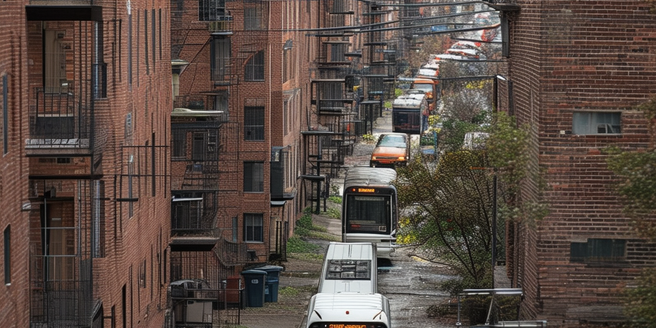Historical Context of Racial Disparities in Welfare Programs
The welfare programs in the United States narrate a complex history fraught with racial inequities. Originally aimed at aiding families in financial need, these systems were initially mostly accessible to white families, showcasing racial segregation from their inception. While attempts were made to broaden the scope of these federal assistance programs over time, systemic racism has continued to mar these efforts. This enduring societal issue and the ongoing discrimination against certain racial groups have influenced the current state of welfare usage, which exhibits significant racial inequities. These disparities highlight the need for persistent, targeted, and steadfast action to eliminate this racial skew towards an equitable welfare distribution. Thus, despite legislative efforts to reform and expand the welfare programs, the haunting effects of systemic racism continue to shape welfare usage in the United States, underlining the lack of true equality and unbiased support.
The Impact of Systemic Discrimination on Welfare Program Usage
Systemic racism and discrimination, deeply entrenched in society, contribute to racial disparities in welfare program usage. Black and Hispanic households often turn to these social safety networks due to circumstantial adversities, burdened by a cycle of lower incomes and higher poverty rates largely spawned by historic inequalities and unjust practices. This results in their higher reliance on welfare support to meet basic needs.
Furthermore, welfare aids serve not only as survival lifelines but potential solutions for the economic divide. However, access to these necessary resources proves challenging due to structural barriers like restrictive rules, complicated procedures, language barriers, and inaccessible service locations, as well as discrimination. These obstacles intensify difficulties for Black and Hispanic households in accessing available services, a problem that needs to be recognized and effectively addressed to ensure equitable distribution of resources.
Analyzing Racial Disparities in Different Welfare Programs
Racial disparities are a stark issue in social welfare programs like the Supplemental Nutrition Assistance Program (SNAP), Medicaid, and housing assistance, with a significant imbalance in their distribution among races. Lower participation rates are observable among eligible Black and Hispanic households compared to their white counterparts, indicating substantial obstacles and disincentives preventing these marginalized households from benefiting. These barriers include complex program eligibility rules which impact communities with less information access, criminalization of poverty, and racial discrimination. The effects of these societal and systemic issues are apparent in varying enrollment rates across racial lines. Therefore, it’s imperative to evaluate and reform these programs in order to ensure equity in resource distribution and eliminate racial disparities in welfare program participation.
Case Studies: Welfare Program Usage in Diverse Communities
Welfare program usage poses unique challenges influenced by the geographical location and socio-economic state of diverse communities, such as inner-city and rural areas. Inner-city communities dealing with high-density population, limited employment opportunities, and concentrated poverty often have higher welfare usage rates due to wage disparities, lack of affordable housing, and basic daily needs struggles. Conversely, Rural areas face different issues primarily linked to geographical factors like transportation difficulty limiting access to services, particularly since these areas are often far from urban centers and lack public transportation systems. Additionally, sparse population and vast geographic distances may make it economically challenging for private service providers and government agencies to maintain or deliver services in these areas. Therefore, welfare programs usage is a complex issue, differing based on each community’s unique challenges.
Strategies to Address Racial Disparities in Welfare Usage
Addressing the racial disparities in welfare requires a strategic process that involves dismantling access barriers, creating and enforcing supportive policies, and developing a deep understanding of socioeconomic landscapes influenced by racial diversity. Promoting inclusivity relies heavily on outreach programs in minority communities. Actively involving these communities in welfare dialogues can result in more precise and effective welfare programs.
Providing comprehensive, clear, and understandable information about eligibility and application processes is also crucial, as it can prevent potential beneficiaries from being deterred. Additionally, it’s vital to train staff members, gatekeepers of these programs, to assist applicants without racial or ethnic biases.
Addressing racial disparities in welfare is an intricate task that necessitates changes on multiple fronts such as comprehensive outreach efforts, thorough understanding of processes, and the training of implicit bias-free staff. With these reforms, a system where welfare is provided equitably without racial discrimination can be achieved.
The Future of Welfare Programs: Policy Recommendations for Equality
To achieve a balanced and equitable future, policymakers must ensure welfare programs are not just accessible but beneficial to all citizens, irrespective of race or ethnicity. Racial inclusivity in welfare benefits is essential to a fair society and healthy democracy, and can only be achieved by making welfare aid that is impactful for everyone. This necessitates regular evaluations and amendments to policies, viewing them as dynamic structures that adjust over time to meet societal demands. Policymakers must maintain a proactive and vigilant stance, ready to adjust programs in response to demographic changes and avoid harmful racial disparities. Policy implementation should include a comprehensive racially-impactful analysis to prevent exacerbating existing inequalities. Mitigating racial inequality is a continuous process requiring persistence, learning, and adaptation from policymakers to promote racial equality and contribute towards an equitable future for all.



